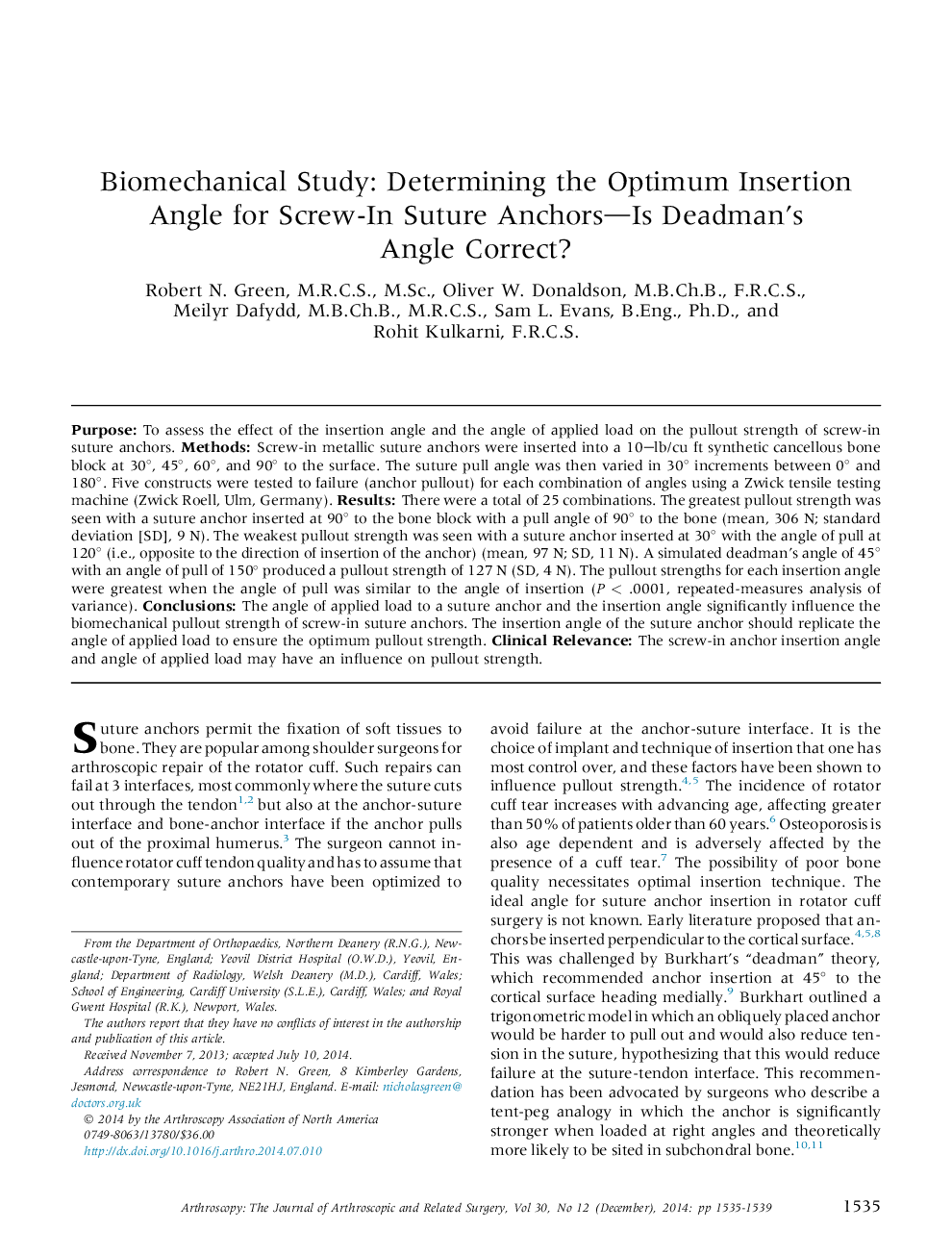| کد مقاله | کد نشریه | سال انتشار | مقاله انگلیسی | نسخه تمام متن |
|---|---|---|---|---|
| 4042387 | 1603489 | 2014 | 5 صفحه PDF | دانلود رایگان |

PurposeTo assess the effect of the insertion angle and the angle of applied load on the pullout strength of screw-in suture anchors.MethodsScrew-in metallic suture anchors were inserted into a 10–lb/cu ft synthetic cancellous bone block at 30°, 45°, 60°, and 90° to the surface. The suture pull angle was then varied in 30° increments between 0° and 180°. Five constructs were tested to failure (anchor pullout) for each combination of angles using a Zwick tensile testing machine (Zwick Roell, Ulm, Germany).ResultsThere were a total of 25 combinations. The greatest pullout strength was seen with a suture anchor inserted at 90° to the bone block with a pull angle of 90° to the bone (mean, 306 N; standard deviation [SD], 9 N). The weakest pullout strength was seen with a suture anchor inserted at 30° with the angle of pull at 120° (i.e., opposite to the direction of insertion of the anchor) (mean, 97 N; SD, 11 N). A simulated deadman's angle of 45° with an angle of pull of 150° produced a pullout strength of 127 N (SD, 4 N). The pullout strengths for each insertion angle were greatest when the angle of pull was similar to the angle of insertion (P < .0001, repeated-measures analysis of variance).ConclusionsThe angle of applied load to a suture anchor and the insertion angle significantly influence the biomechanical pullout strength of screw-in suture anchors. The insertion angle of the suture anchor should replicate the angle of applied load to ensure the optimum pullout strength.Clinical RelevanceThe screw-in anchor insertion angle and angle of applied load may have an influence on pullout strength.
Journal: Arthroscopy: The Journal of Arthroscopic & Related Surgery - Volume 30, Issue 12, December 2014, Pages 1535–1539